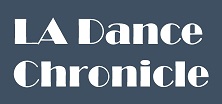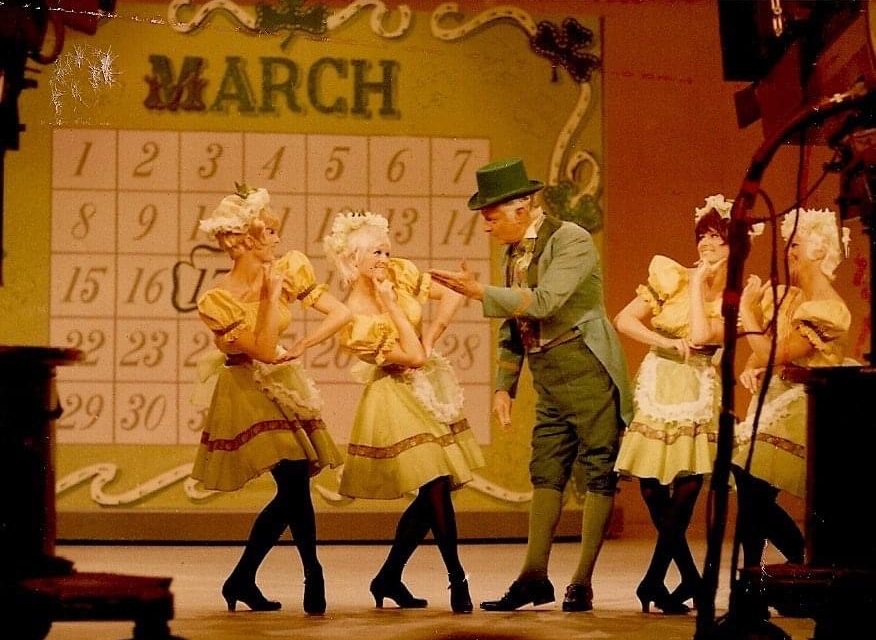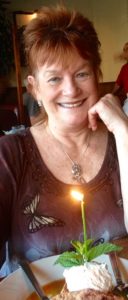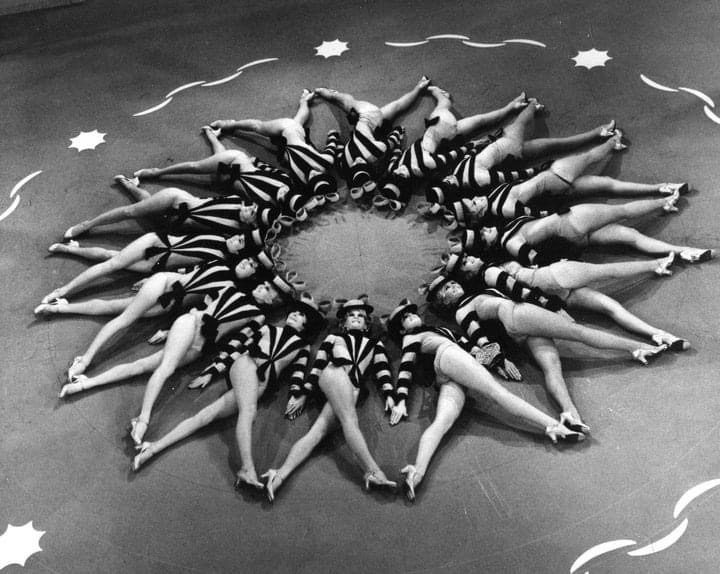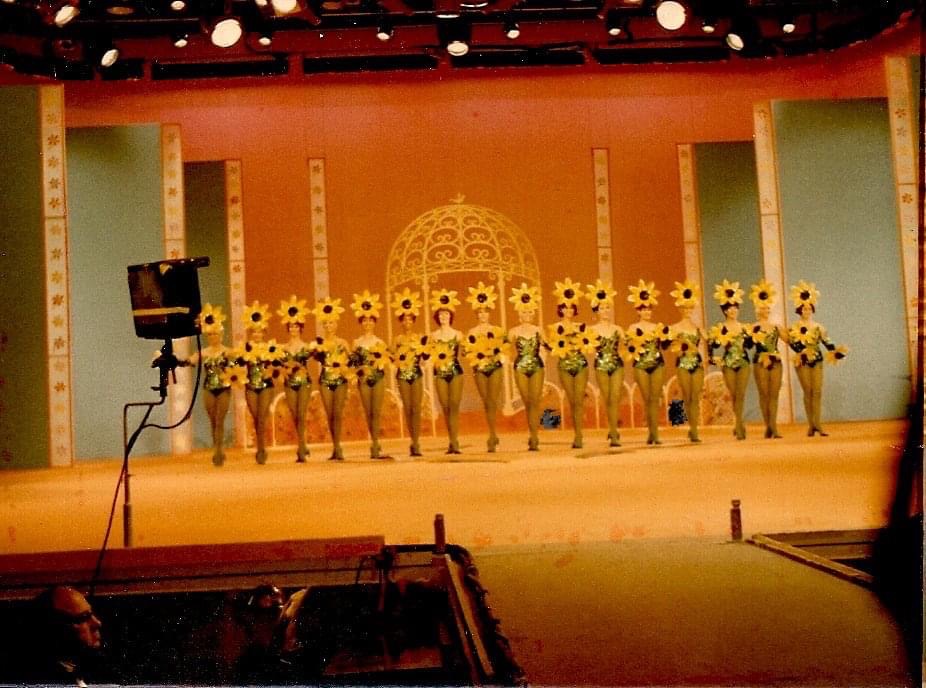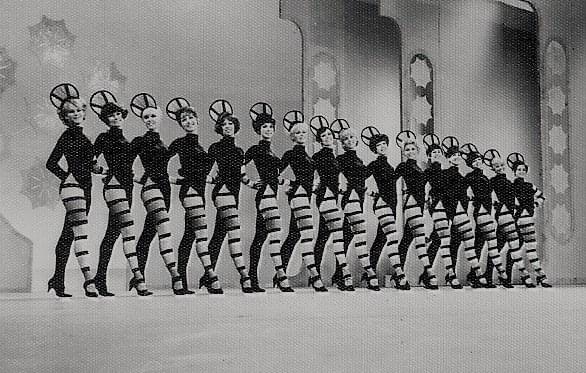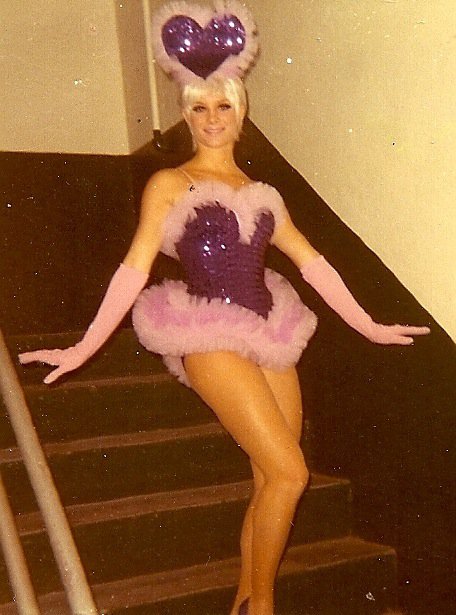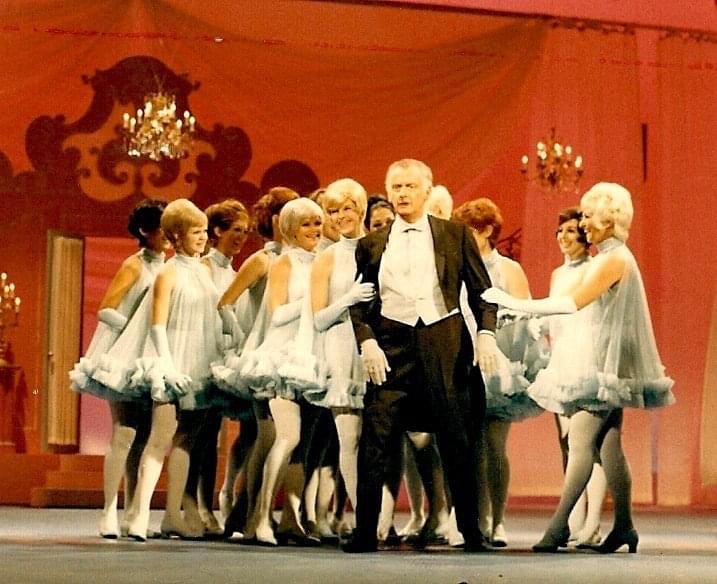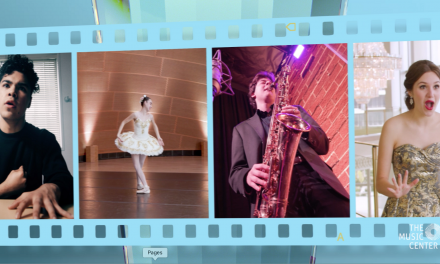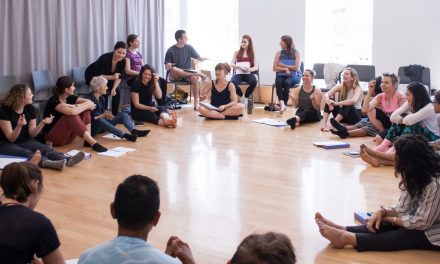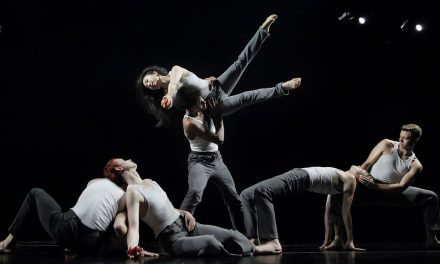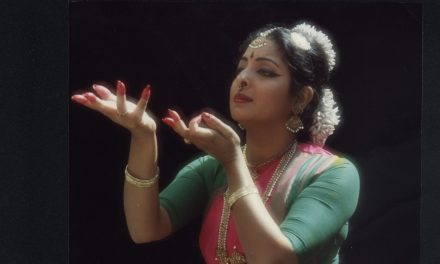Valerie-Jean Miller was one of the busiest professional dancers of her era the late 1960’s into the 1990’s. She was the quintessential dancer able to work in all forms, a quick study, a great look, and an ability to allow her performance to shine with the joy of dancing. When Valerie is onstage you watch her
The highlight of her professional dancing career, which began at age 15, was working for Bob Fosse from 1978-1981 in the Broadway Tony Award-winning musical “Dancin’.” After performing in the show at the Broadhurst Theatre for the first year it was on Broadway, Valerie-Jean went on to be the Dance Captain and Featured Performer for the 1st National Tour for two years, including playing the Ahmanson for 3 1/2 months in the summer of ’79, as well as in cities all over the country.
And, for those who remember the golden age of television, Valerie-Jean performed as a June Taylor Dancer on the Jackie Gleason show at just eighteen. She also danced on the Carol Burnett Show, Sonny and Cher Variety Hour, and The Jackson Five Show among many others. She toured with such notable stars as Juliet Prowse, The Osmonds, Ray Anthony, Jimmy Durante and more as well as being cast in countless movies, dance companies, television series and TV specials. She appeared on six Academy Awards Shows and countless nightclub acts, musicals, and Industrials.
She also was an assistant to top choreographers including Jaime Rogers and Stanley Donen and choreographed the Writer’s Guild Awards in 1990.
Valerie’s career has been exceptional in every way, and LADC was fortunate to have the opportunity to interview this wonderfully talented woman.
Question #1. Your Father was a Vaudevillian performer. Tell us about his career and how he influenced you as a young child.
There was never any question that my Dad would teach me all his tap routines, steps, and eccentric dancing as soon as I stopped crawling, which indeed is what transpired. My mom used to always say about me, “She whistled before she talked and she danced before she walked.” I learned them both from my dad.
He was from a farm in Indiana and had worked for a living since he was 12 years old. At 15 he became an usher at a movie theater, which was converted into a Vaudeville house.
One of the performers took my Dad under his wing and through his mentorship he became a part of one of the top Vaudeville acts touring the European circuit and parts of the US. Lon Purdy was a hoofing, eccentric-dancing Vaudevillian and gave my Dad a great gift at a very young age. It was only for a few years, but it shaped my father’s artistic and work ethic for his entire life.
Question #2. Can you please tell us about seeing The June Taylor Dancers on television in 1953 and how you unknowingly predicted your own future?
I got my first tap shoes when I was three. God bless my mom for not curtailing my practicing on our terrazzo floors. I wore them til I got in bed each night. They were black patent leather with Grosgrain ribbon bows.
Dad and I would practice in our living room, and sometimes my mom would play the piano for us. I ate it up. It was always joyous, funny, and exhilarating and my Dad made it that way.
I started dance classes a year or so later, studying acrobatics, tap and basic ballet with Steve Condos and did my first tap dance recital when I was 5.
Our family unit, Mom, Dad, younger brother, and me, were devoted variety show watchers. We had a weekly schedule of shows that we watched together, especially Ed Sullivan, Red Skelton, Jackie Gleason, Lawrence Welk, etc. At that time, there were a group of choreographed dancers on each show. Most always, I would be to the side of the black-and-white TV picking up the steps and following along.
When I was three, (1953) I have a vivid memory of finishing the kick line with the June Taylor dancers and then telling my parents “that’s what I want to be when I grow up.”
Question #3…You became an exceptionally good, well-rounded dancer, please tell us a little bit about your training. Did you also study other art forms, piano, voice, etc., and or sports, cheerleading? Did you always want to be a performer/have a professional career?
I did always want to be a dancer/performer. Even before I started taking any classes, I would perform for any visitors that came to our house and would always put on a show at our grandparents’ home for Sunday dinner. I was what you would call hyperactive, nowadays; always hopping, skipping, twirling, and wiggling, never staying still. Never napped. Still can’t.
Wisely, my parents enrolled me in baton, water ballet, trampoline, diving, gymnastics, and piano lessons along with dance classes in tap, ballet, and acrobatics, just to use up my boundless energy.
My early training in dance, from Steven Peck (Acrobatics) and Steve Condos (Tap) set the stage for me. I was voracious and wanted to learn every style and form I could. Growing up in Miami I had some wonderful teachers. Mitzi Malloy, a former Rockette, taught tap, ballet, and acrobatics. I absorbed everything I could at her studio. I started teaching there at age 12, in addition to taking all the classes and performing in the yearly dance recitals. I quickly realized that this was a sure way to perfect what you have already learned.
When I was 12, I recruited much of the neighborhood to be in the backyard shows that I put together, with the help of my incredibly supportive parents. My dad built a stage in the backyard and stage-managed, and my mom and I pre-recorded all the music on the piano, played the records, ran the lights, and made many of the costumes. I choreographed and staged it all, using my brother to sing and dance with my friends in the hood who I had taught to dance. Even “Buffy the Ballerina.” my piano teacher’s dog performed. “Frantic Frolics” was a big success making a little money, and spurring a new show the next summer, “Capricious Capers.” It’s clear I had show biz in my genes!
During my teenage years I studied ballet and pointe work from Georges Milenoff and from the Miami Ballet, with Tommy Armour and Laura Rose May. I also studied with Edith Royal of Royal School of Dance.
When I was 15, I was noticed by a choreographer, Jack Nagle, who produced and choreographed Vegas-style shows on Miami Beach. He needed to replace a dancer in his Parisian show at the Eden Roc Hotel. After scouring the local dance schools, he found me at Mitzi’s Dance Studio. He needed a dancer that could do acrobatics and aerial work, so between my sophomore and junior year of high school, I, while still underage to legally work in a nightclub, became a professional dancer. I worked all summer long, and through the rest of my high school years dancing in each new show that was produced.
In that first show, one of the male dancers, Ronn Daniels, also taught dance classes and became my first jazz teacher. He taught fantastic tap classes too! Another teacher I absolutely adored was Beatrice Laverne, who taught terrific tap classes and jazz classes using Luigi’s warm-up and style. These are the teachers whom I feel gave me the training, technique, and confidence I needed. In addition I was an avid surfer, I played violin in the junior high school orchestra, accompanied the chorus on piano during concerts, was on the gymnastics team in high school, ran track, and studied Hawaiian and Tahitian dancing, doing “Club Dates” with the Kam Islanders throughout my high school years. All the while I continued to perform in the Jack Nagle shows as well.
Question #4. You have mentioned that you went with your family to meet the Jackie Gleason train when they moved the show from NYC to Miami. That must have been, momentous for you. Please tell us about that and also the reason you remember it so distinctly.
The reason I remember when my parents took me to meet the Gleason Express train arrival was all the publicity ahead of time about it. As you can see from this clip, it was a big deal.
I remember being in awe of it all, the hoopla, the crowd, getting autographs and pictures with the June Taylor Dancers and the Glea Girls. It was such a thrill for me. I got to meet some of the dancers and told them that I was hoping to be one of them when I grew up. Little did I know that’s exactly what would happen.
I also remember because I had just finished 7th grade and it was something to look forward to after mourning President Kennedy’s death, which affected me greatly. Earlier that year (1964) my high school changed its name from North Miami Beach junior high to John F. Kennedy junior high.
Question #5. Please tell us how you came to be asked to audition for June Taylor and about the audition itself. Technically what was required of you?
Throughout high school, I worked in different Vegas-type shows on Miami Beach, at hotels like The Eden Roc, The Doral, The Deauville, The Americana, and The Fontainebleau. I performed alongside some of The June Taylor Dancers when they were on hiatus, usually during the summer months when The Gleason show wasn’t taping.
Since I was just 15 when I was first hired to work on Miami Beach, my mom would drive me to work at whatever hotel and pick me up after the show. I was not allowed out into the showroom where they served alcohol so I came and left through the backstage kitchen area. The night of my senior prom, I was in a show on the Beach so I missed going to my prom but a lot of my classmates came to see the show that night.
I graduated from high school in June of 1968, spent part of that summer in New York assisting my teacher Ronn Daniels at the Dance Educators of America (DEA) Convention and taking as many classes as I could fit in. When I returned in August, my big decision was which college scholarship to take at either Barry College or The University of Miami. The scholarships were for Drama and Music with a focus on piano.
I got word that June Taylor was holding auditions for the next season of the Jackie Gleason Show. So, that August, I spent five days, eight hours a day in auditions for June. I had never really auditioned for a job before and this is one that meant a lot to me. After all, I’d dreamed of this since I was three years old. We did ballet and tap combinations, jazz combos, and a lot of leaping and pirouetting across the floor. June watched with her meticulously eagle eye. She was pleasant but stern, expecting us to execute everything to her standards. I remember her repeating, “There is no room for mistakes on a live television show.” The June Taylor Dancers were known for their precision and perfection. Their famous kick line at the end of each opening number and the “overhead” floor section where they formed kaleidoscopic images, while the camera was shooting from above, were legendary.
One of the days during the audition was spent working on both an overhead section and of course, the kick line. We spent hours on the floor in different formations, taking turns in groups, as June stood atop a ladder to watch what it looked like from above. There was not a pinky out of place that she did not pick out and correct. Then we’d “take it from the top.” again. We never stopped working until she was pleased.
For the famous kick line, she lined us up according to height, with the tallest girls in the middle, graduating down on each side; eight girls on stage right, eight on stage left, all together in one very straight line. I should also mention her assistants, Peter Gladke, and Mercedes Ellington (Duke Ellington’s granddaughter) who were always there to help anyone who needed it.
I, being 5’4”-ish, was at the very end of the line, which if anyone has ever done a kick line, you know it is the hardest spot to have. You’ve got to kick as high as the girls that are 5’9” in the middle and move the farthest and fastest if the line is moving.
The last day of auditions was a Friday. There had been some eliminations each day before that. We who were left, and therefore still in the running for one of four positions, got to work with the actual dancers that had been on the show for many years. Most of them had joined the show in New York and had made the trek on the train, moving the show from New York to Miami four years earlier.
June would pick a few of us out and add us into the actual “line” and we would do the combinations all together. She did a lot of mixing and matching. The tension mounted for all of us knowing that her selection was imminent and this was the moment we had all dreamed of or dreaded, depending on which way it went.
I was elated to be one of the four chosen. My place in the line was on the end on stage right, next to the girl, Jeanne Wilbar, that I had replaced back when I was 15, at the Eden Roc.
I had actually met many of the regular dancers and gotten their autographs and my picture with them, back in 1964 when my parents took me to see their train come in to Miami. What a trip!
I was the youngest and shortest June Taylor Dancer ever hired, and it was “a dream come true” for me.
Question #6. Tell us a little about the experience of working for June Taylor on the Jackie Gleason Show. Did it meet your 3 year old expectations?
About two or three weeks later we started rehearsals. This was my very first job dancing on television, for AFTRA. We were on week-to-week contracts, which meant if we did not do our job well we could be fired at the end of the week. I saw this happen to one of the other dancers who could not get just one step in one of the numbers. I pretty much lived in fear a lot of the first season on the show, sometimes crying all the way home, not being sure I was doing my best sometimes. That’s a dancer for you; always striving for perfection.
June meant business and ran rehearsals like clockwork. We used to joke that she should have been a drill sergeant. We would start sharp at the top of each hour and rehearse for 55 minutes, then a bell would ring that was located atop the rehearsal pianist, Milton’s piano. June would open her office door, let her gray miniature schnauzer named Dancer out of the room, and we had exactly 5 minutes to go to the restroom, make a phone call or take a cigarette break and be back in line in place at the top of the hour. We would rehearse from 10:00am till 5:00pm every day of the week.
We had fittings for our costumes each week. There were always 16 (plus two swings), replicas of one design, at least during that first season. Often there was something attached to our costume, like a scarf that would emerge from inside a hat, or something attached to the costume itself that we would utilize during the overhead section to help make a pattern. It was all so intricately choreographed. Lots of props were used in these numbers, from a cane, to a ladder, crutches, toy rifles, etc. There was usually some sort of added challenge in addition to the dance routine that we absolutely had to get perfect each time.
The entire production company, Peekskill Enterprises, was one of the best, most tightly run and well-organized production companies in the business. I found this out later in my career after working on many television variety series.
Fridays were show days. We camera-blocked first, then did a dress Run-Thru, before taping in front of a live audience at the Miami Dade Auditorium. The dancers were each given a dozen roses before every show, delivered to our dressing room, from our generous, magnanimous Boss, Jackie Gleason. And away we go!
I got to work on the last two seasons of The Jackie Gleason TV Show. In between those two seasons, the June Taylor dancers appeared all summer long in Lake Tahoe at the Sahara hotel as the opening number for Headliners, such as Jack Benny, Rich Little, Frank Gorshin, Shirley Bassey, Joan Rivers, Phyllis Diller, etc. I was with 17 other mostly older girls who I simply adored and admired while getting to work in a top-of-the- line show. Being away from home for the first time, what an incredible summer that was for me.
The job was hard and demanding, but I have no regrets for not taking those college scholarships, and instead embarked on what would be a 30-plus-year career as a professional dancer. Something I had declared I would do when I was a three-year-old had come to pass.
For more info and pictures go to Valerie’s Facebook page.
Written by Tam Warner for LADC, May 25, 2020.
Featured image: Irish tap number with Art Carney for St. Patty’s Day – choreographed by June Taylor – Photo courtesy of Valerie-Jean Miller
